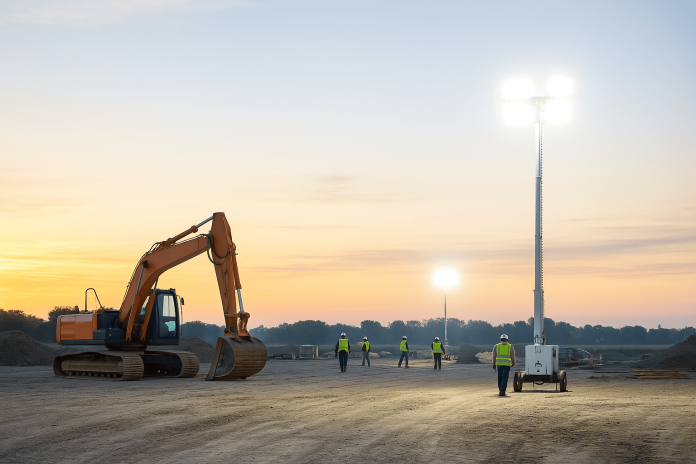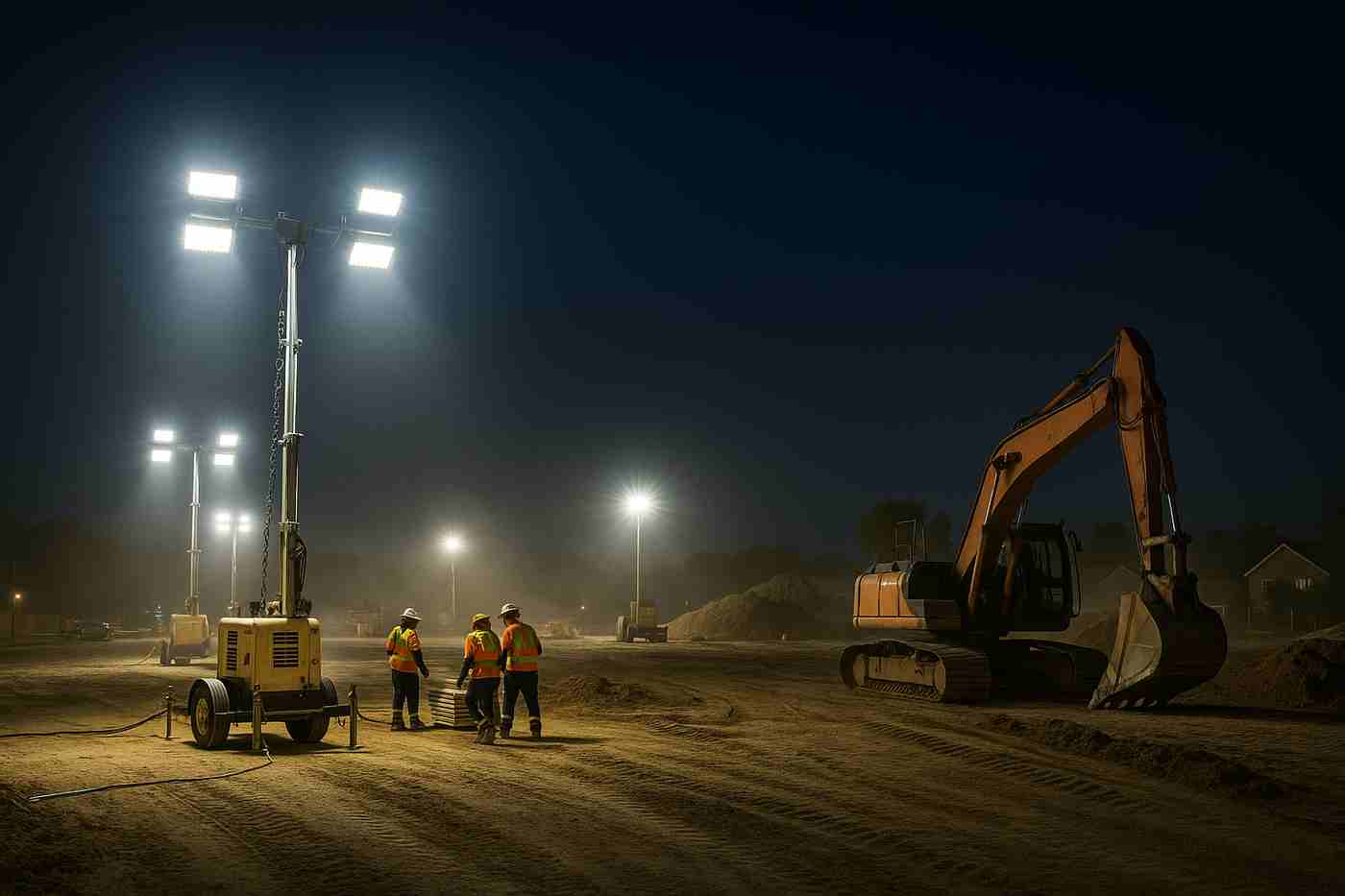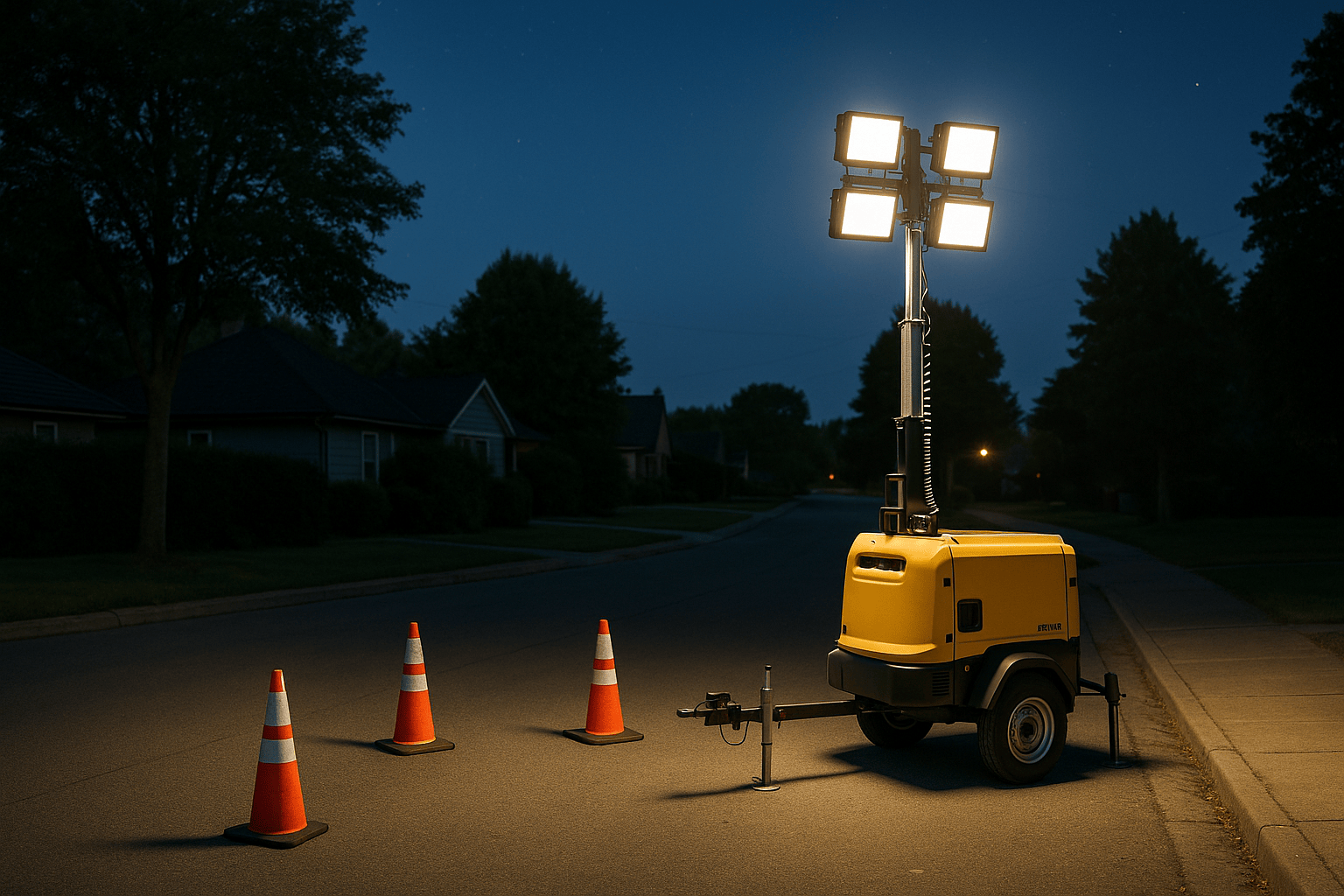When teams ask, ‘What Businesses Should Consider When Investing in Portable Lighting Solutions?’ they are really asking how to keep people safe, keep projects on schedule, and control costs from the first night shift to the last.
Portable lighting serves as a safety control, a productivity tool, and a compliance requirement for many sites that operate beyond daylight hours or where permanent infrastructure is not available.
It’s not just brightness that solutions influence; compliance, productivity, and other project outcomes are too. Many decision-makers researching the market for dependable equipment often come across companies such as PR Power when exploring long-term solutions.
Choosing the right system requires striking a balance between technical performance and the specific demands of each industry. A well-planned investment ensures projects stay on schedule without compromising safety standards.
The right plan strikes a balance between technical performance and real-world constraints, such as noise limits, fuel logistics, and neighborhood impact. The following guide explains how to size light, select a power strategy, protect equipment from harsh conditions, and verify value throughout the asset’s entire life cycle.
Portable lighting is essential. Projects may extend beyond sunlight or take place in areas with no permanent infrastructure. But are those lights effective in delivering results? Lighting is a crucial support for Construction, Mining, Agriculture, Emergency Services, and many other sectors.
Selecting a suitable system requires striking the right balance between technical performance and the specific requirements of each sector. Proper investment management will ensure the project runs smoothly and on schedule without compromising safety.
Key Considerations for Portable Lighting
From lumens to lux in the field
Lumens describe total light from a fixture. Lux describes light on the ground where the work happens. Sites write requirements in lux because safety depends on visibility at the task surface, not just at the lamp.
Color quality and visual comfort
Choose a neutral white in the 4,000 to 5,000 Kelvin range for crisp contrast without a cold cast. Favor a color rendering index above eighty for accurate reading of paint marks, cable identifiers, and safety signage. Where cameras or drones document progress, select drivers that avoid visible flicker.
A few quick cues
-
Request photometric files and a simple plan that shows predicted lux and uniformity.
-
Angle heads slightly downward and cross light traffic lanes to limit glare.
-
Keep lenses clean to add measurable lux without extra power.
Power Choices That Fit The Duty Cycle
Diesel generator towers
High output with extended runtime and strong service networks. Best for remote sites that already manage fuel.
Hybrid systems with battery assist
Lower fuel consumption and quieter nights as the engine rests during periods of low load. The purchase cost is higher, so utilize scheduling and dimming to capture savings.
Battery only towers
Silent and emission-free at the point of use. Ideal for residential work, enclosed yards, and events. Success depends on a charging plan and realistic expectations for runtime.
Solar-assisted systems
Very low operating cost for stationary applications with moderate lux needs: weather and siting matter.
Site mains with inverter
When grid power is reliable, inverters and cabling deliver consistent output at a low cost, addressing routing and protection in the work plan.
Selection snapshot
-
Long, high-intensity shifts: diesel or hybrid
-
Quiet hours near neighborhoods: battery or hybrid in silent mode
-
Stationary, moderate needs: solar assist
-
Sites with grid access: mains with inverter
Supporting Workplace Safety
Safety regulations require clear and consistent lighting in hazardous areas. Adequate lux levels reduce the likelihood of trip hazards and improve visibility for heavy machinery operators. Voltage regulation within the system prevents light fluctuation that could compromise worksite safety. Portable lighting is, therefore, practical and a direct contributor to safer workplaces. Safe illumination also gives project managers confidence that their sites comply with industry health and safety requirements.
Built For Harsh Environments
Portable equipment is often used outdoors and must withstand dust, spray, vibration, and salt air. Confirm ingress protection ratings for both fixtures and control boxes, corrosion-resistant frames and fasteners, shock-mounted electronics, and thermal management that holds output on hot nights. If your corridor is coastal or you operate in mines, ensure that coatings and connector seals match the exposure conditions.
Photometrics, Glare Control, and Human Factors
Good lighting is not only bright. It is even, comfortable, and predictable. Ask vendors for photometric layouts based on your zone sizes. Use optics or visor kits that limit glare for operators. Maintain uniformity ratios within the guidance to prevent crews from moving through alternating bright and dim stripes. If you record video, confirm that you have flicker-free drivers.
Noise, Emissions, and Community Relations
Work at night usually happens around homes, hospitals, or shelters. Ensure a pipeline of goodwill by planning for decibel limits and quiet hours. It’s important to use hybrid and battery modes when your neighbours want to rest. Add spill control and spark arrestors where required. Schedule refueling when there is less traffic on the roads. Your community will recognize your care, and your schedule will benefit.
Smart Controls, Telematics, and Fleet Visibility
Modern control packages standardize performance and reduce waste. Auto start by photocell or timer keeps every tower on the same schedule. Dimming and zoning match output to activity, so energy is not wasted on empty areas. Telematics show fuel level, battery state, fault codes, and location. Geo-fencing deters theft and simplifies dispatch. Remote adjustments save time and miles.
Deployment and Transport That Do Not Slow The Crew
Mast height sets coverage and uniformity. Taller masts can reduce the number of towers required for a yard or haul road. Decide early whether manual or hydraulic raise suits your labor plan. Trailer-mounted towers move quickly between gates and come with road lighting and brakes for public travel. Fork pockets, balanced lift points, and clear tie-downs make loading safer and create a consistent routine for setting the winches with labels and locks.
Maintenance Rhythm and Spare Strategy
A steady rhythm keeps the light on and costs down.
Suggested cadence
-
Daily: visual check, lens wipe, and fuel or charge review
-
Weekly: verify timers or photocells and test emergency stops
-
Monthly: full function test and telematics review
-
Seasonal: coolant and heater checks in winter, dust seals and ventilation in summer
Common spares include oil, fuel, and air filters for diesel units, battery fuses and charger leads for electric units, mast cables and safety pins, fixture gaskets and lenses, trailer tires and brake parts.
Budgeting and Total Cost of Ownership
Do not stop at the purchase price. Add fuel or electricity, labor for refueling and service, spare parts, downtime risk, and expected resale value. Divide the total by the number of illuminated hours to find the cost per hour of light. That single number lets you compare diesel, hybrid, battery, and solar on equal terms. Use telematics to validate the plan and tune schedules.
Buyer Prompts and RFP Language
When requesting quotes, ask vendors to include a simple lighting layout that meets the defined lux in a given area with a stated uniformity ratio. Request the expected runtime for full and half outputs. Confirm ingress protection ratings, corrosion protection, operating temperature range, decibel rating at seven meters, and any quiet mode capability.
List control features such as photocell, scheduling, dimming, and remote monitoring. Clarify service intervals, parts availability, training, delivery, and commissioning support. Many buyers evaluate established providers, such as PR Power, when planning a long-term program.
Frequently Asked Questions
What is the difference between lumens and lux?
Lumens measure the total light a fixture produces. Lux measures the light that reaches a surface, such as a road or workbench. Safety and quality depend on light at the task surface.
How tall should the mast be for common sites?
Taller masts spread light farther and improve uniformity. Many projects use masts between twenty-three and thirty-three feet. Select a height that strikes a balance between coverage and glare control.
How can we reduce fuel use without losing visibility?
Utilize automatic scheduling, dim during periods of low activity, and deploy hybrid or battery-assist options where they align with the duty cycle. Keep lenses clean and aim heads correctly so light lands where people are working.
Are battery-only towers practical for full night shifts?
They can be, especially where moderate lux is acceptable and quiet operation is essential. Success requires a charging plan or rotation. For very high lux levels across long shifts, hybrid or diesel with dimming is often the better option.
Which IP rating should we request for outdoor work?
Aim for IP65 or higher on fixtures with sealed connectors and a gasketed control box. This protects against dust and water in real field conditions.
What color temperature supports comfortable night work
A neutral white, near 4,000 to 5,000 Kelvin, supports clear contrast and accurate color recognition without a harsh cast.
How do we control glare for drivers and spotters?
Use optics or visors intended for glare control, angle heads slightly downward, and cross light traffic lanes so operators do not drive into beams.
What noise levels are acceptable near neighborhoods
Follow local rules. Many buyers request decibel ratings at a distance of seven meters and at the property line. Quiet hours with battery or hybrid mode help protect community relations.
What maintenance plan keeps towers reliable
Adopt a daily, weekly, monthly, and seasonal rhythm. Stock common spares and track service with telematics so you prevent surprises.
How do we compare offers fairly across power types?
Calculate the total cost of ownership. Include purchase, fuel or electricity, labor for service, spares, downtime risk, and resale value. Divide by illuminated hours to get the cost per hour of light.
Can we integrate towers with fleet telematics?
Yes. Modern systems report fuel level, battery status, run hours, GPS, and fault codes. Geo-fencing and remote scheduling improve security and consistency.
What documentation should vendors provide for compliance?
Request photometric data and a plan that shows lux and uniformity. Confirm protective earth, breaker sizing, voltage regulation, and any required emissions or noise certificates.
Conclusion
What Businesses Should Consider When Investing in Portable Lighting Solutions? Stated but powerful when executed – a luminance target should be used to size lighting based on its application. Pick a power plan that suits the duty cycle and is acceptable to the community.
Protect equipment from weather and vibration. Utilize controls, telematics, and a regular maintenance schedule to deliver reliable lighting at the lowest hourly cost. An excellent specification and a reliable supplier network, which can include PR Power, ensure your site is safe, evenly lit, and continuously operational night after night.



